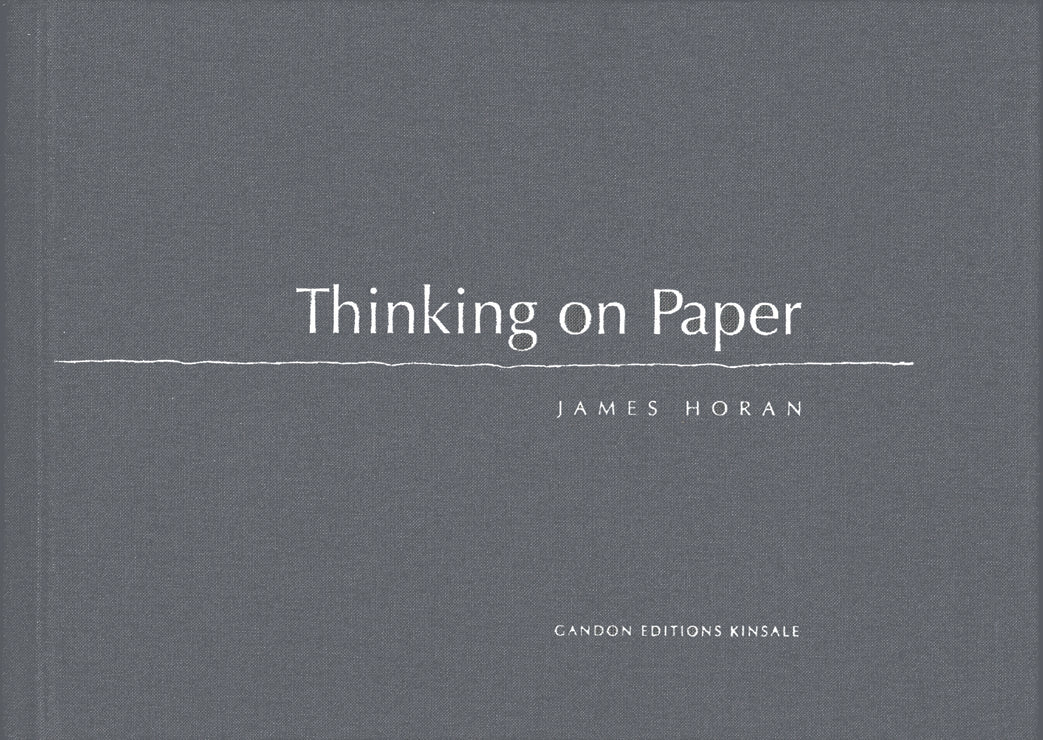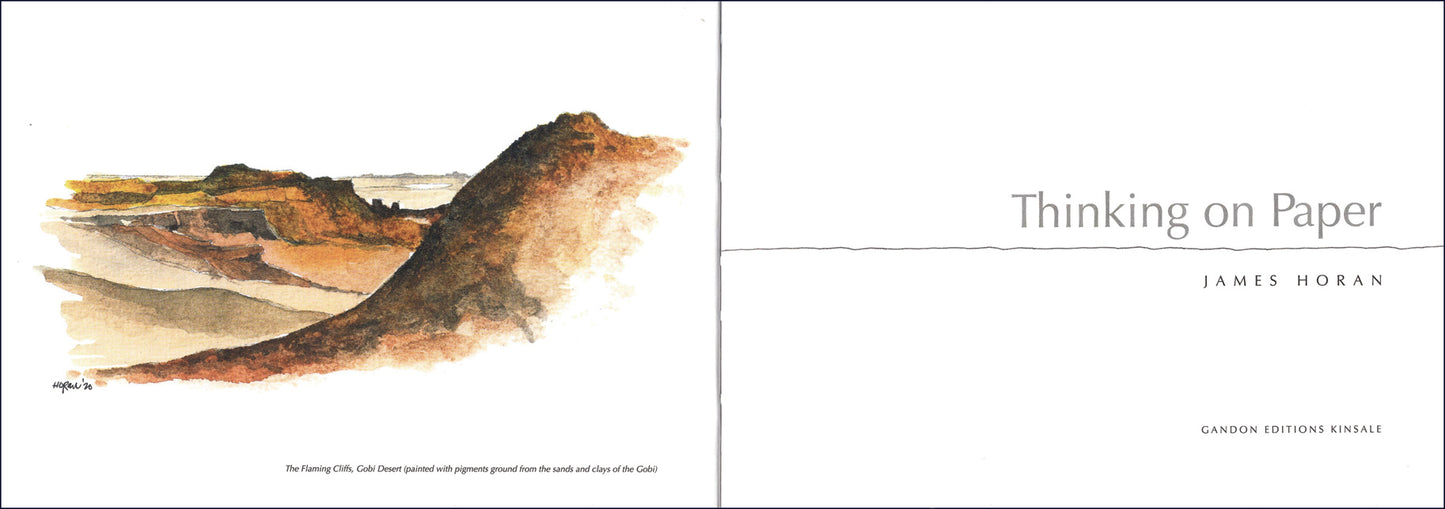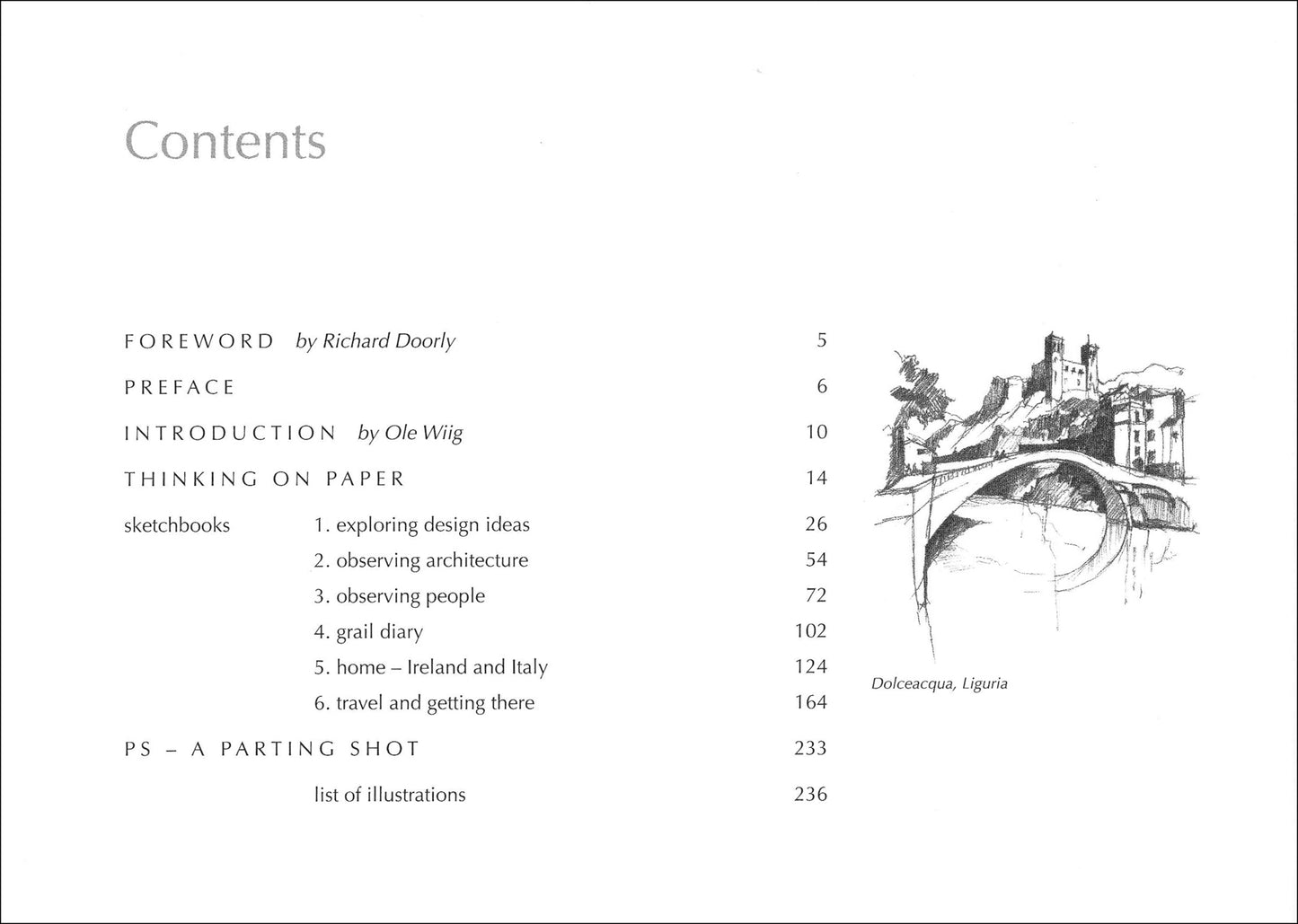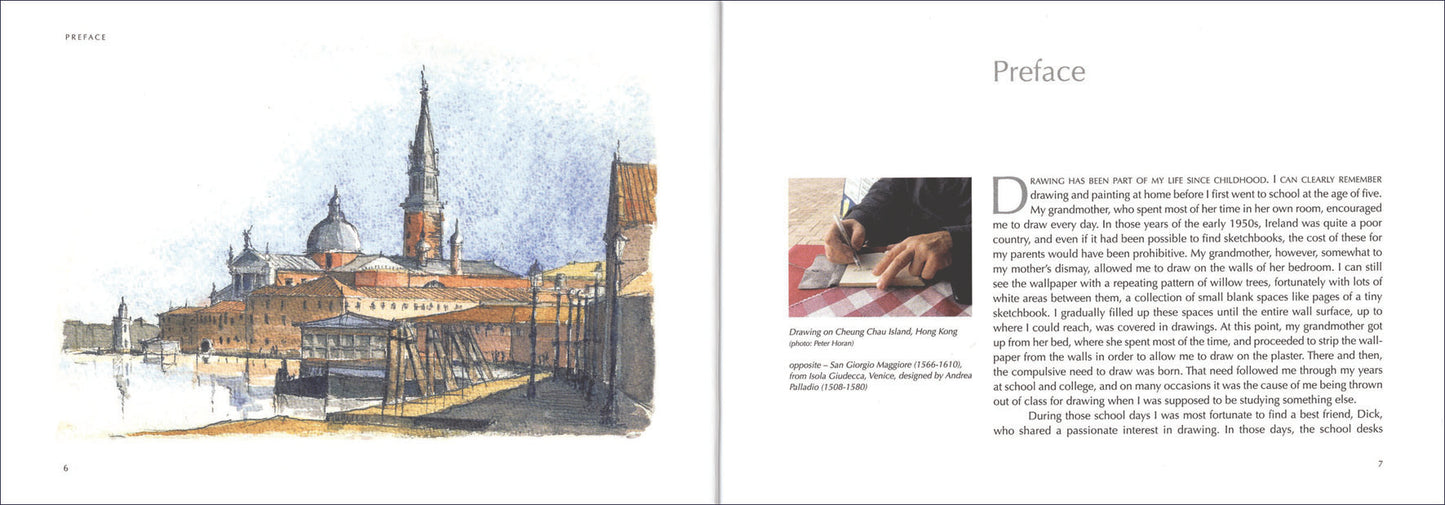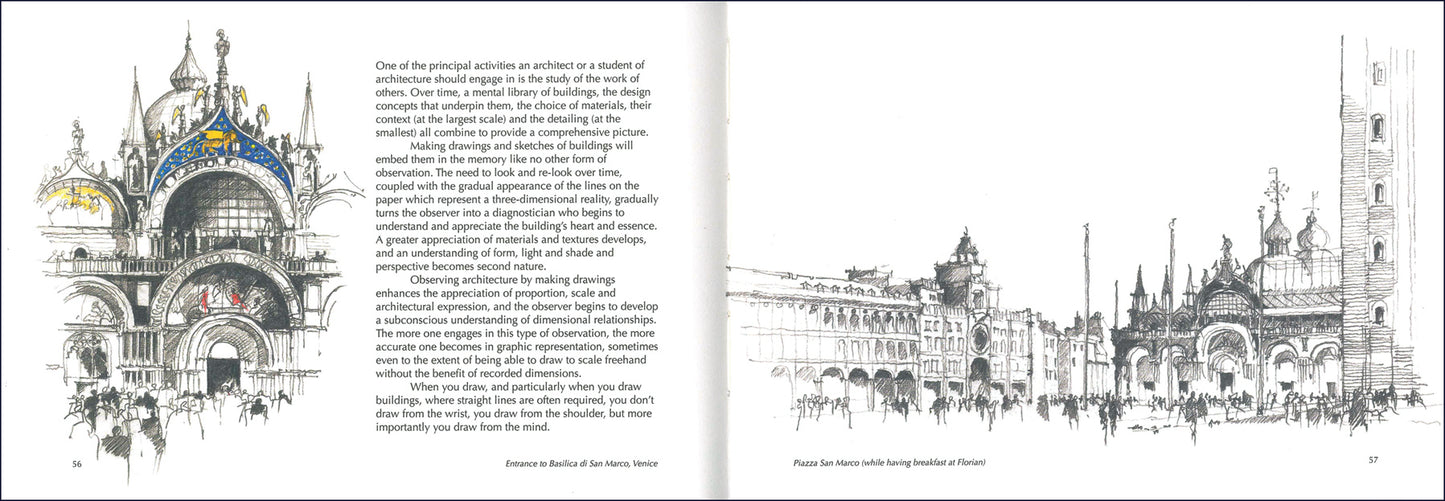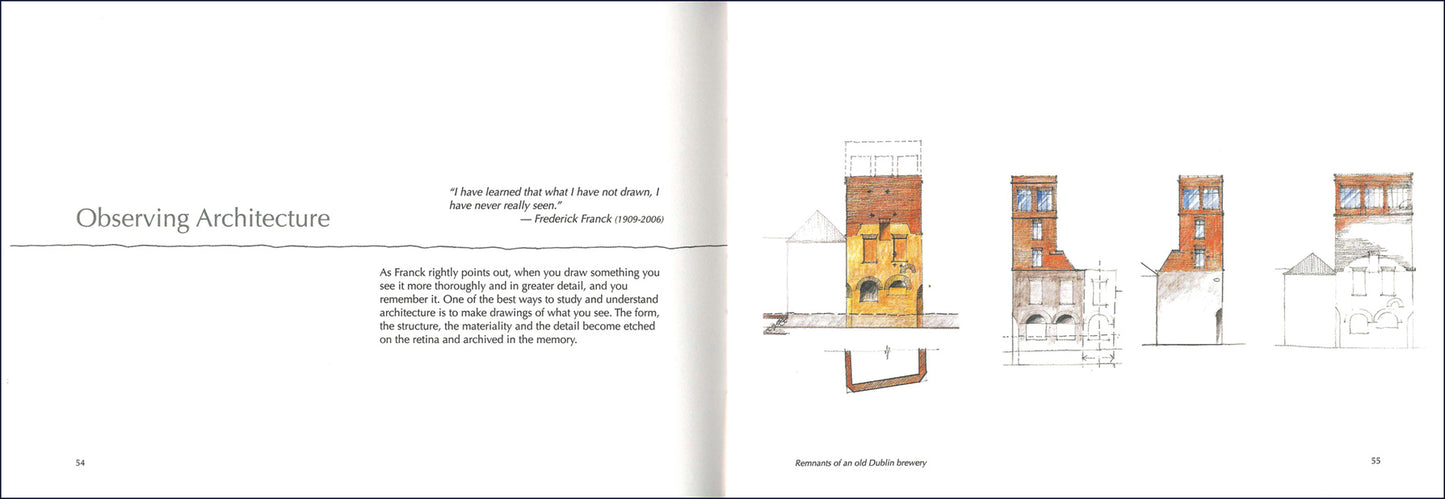Gandon Editions
THINKING ON PAPER
THINKING ON PAPER
Couldn't load pickup availability
Share
by James Horan
ISBN 978 1910140 277 240 pages 15 x 21 cm 327 illus €25 hb
Thinking on Paper contains hundreds of James Horan's sketches and watercolours from a collection spanning decades. It investigates the value of using drawings to explore ideas, designs and concepts, record architectural observations, and retain experiences of places, languages and cultures encountered on one’s travels. The making of a drawing is in itself a journey to unplanned places. The sketchbook is the ever-present silent companion, a sounding board which reflects the echo of one’s own thoughts and reverberations of conversations with oneself.
EXTRACTS
The beauty of James Horan’s drawings is the first thing that strikes the viewer – the line, the composition, the colour. But if style is always determined by an individual eye and hand, behind it there always lies a mind pursuing a search – as the Renaissance man of Ireland. James’s sketches and drawings can also be seen as an architectural testament spanning many decades. They are about the experience and excitement of sight, learning to see things more clearly, and about processing that which has been seen. Simple, crisp black-and-white sketches stand next to more thoroughly developed examples in bright colours ...
Many of James’s sketches and drawings have been made in Italian villages, towns and cities. His lifelong interest in urbanity, in streets, houses and urban spaces, and in how we experience them finds particular expression in Italy. Here he liberally draws arches and towers, boats and palm trees and urban environments. However, he covers a greater geographical spread than Ireland and Italy. A large number of his drawings can be seen as travel logs. The drawings also testify to his journey from the ‘old’ to the ‘new’ world, and back ... .
I am both intrigued and impressed with the great collection of James Horan’s ‘portfolio’, encompassing lovely portraits, impressive landscapes, inviting urban life as well as great architectonic fantasies. It is an outstanding piece of collective art, demonstrating that the power is in the pencil.
— from the introduction by Ole Wiig
The sketchbook has always been an important piece of equipment in the armoury of the architect, designer or painter. The sketchbook in the pocket remains in readiness to allow its owner to take notes, jot down ideas, make records and observations, create sketches while travelling, and explore and investigate design concepts from their earliest inceptions. It is a silent companion, but nevertheless a sounding board where can be heard the echo of one’s own thoughts and reverberations of conversations with one’s self..
In addition, the drawing and the sketchbook can, of course, become a means of conversation. It can either play the role of an intentional communication, instigated in order to demonstrate an image or to explain an idea or concept. Or it can be the catalyst for an accidental communication which often occurs when a passer-by, intrigued by the person drawing, stops to see what is being sketched. This accidental type of contact is a regular occurrance while travelling..
Travelling and drawing have always been close companions. The travel sketchbooks of architects and painters reveal the extent and variety of their journeys to strange and distant places, as well as the inner journeys of their minds and their observations. In the same way that photographers like to record their experiences while they travel, the exposure to new places, people and cultures engenders the need to draw, record, analyse and explore the richness and novel quality of exotic locations.
— from the essay by James Horan
|
CONTENTS Foreword by Richard Doorly 4 SKETCHBOOKS 1. exploring design ideas 26 PS – A Parting Shot 234
|
